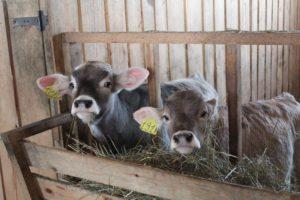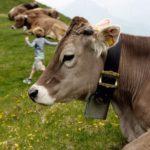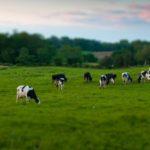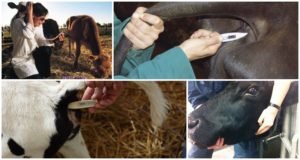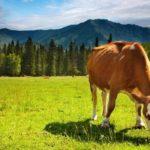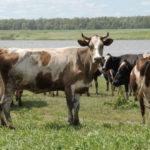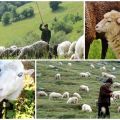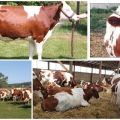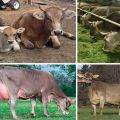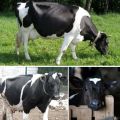Rules for grazing cows and where they are allowed when they are put out to graze
In summer it is recommended to graze calves and cows in pasture. You can buy a land plot with an area of half a hectare, sow legumes and grasses and graze your animals on this territory. If there is no personal pasture, you will have to contact local authorities and find out where the territory specially designated for grazing is located. It is forbidden to graze cows in the city, near the road or on the river bank.
How to graze cows correctly
There are grazing and veterinary rules for keeping pets such as cows. These instructions are approved at the state, that is, at the legislative level. According to these recommendations, cattle grazing is organized. If you don't adhere to the rules, you will have to pay fines.
Herd grazing
Cattle can be grazed on fenced or unfenced pastures. In each rural area there are territories specially designated by the local government for grazing. The grazing is carried out by the shepherd, with whom they conclude an agreement, or the livestock owners themselves, in turn. The larger the number of animals, the less often the herd will have to graze. Usually, in the role of a shepherd, each owner is 3-4 times per season (from spring to autumn). The person who grazes the herd must make sure that the animals do not run away and wander into someone's private property. All responsibility for the actions of the cows lies with the shepherd.
It is forbidden to graze animals in places not designated by the administration for grazing, including in the coastal strip and near roads. Cows are driven into the general herd only after registration, all vaccinations and permission. Before grazing, you need to find out where the animals gather and where the grazing land is. Every morning you will have to drive your cattle to the designated point, and pick it up at lunchtime and in the evening. If you graze cows in unauthorized places, you will have to pay a fine or reimburse the owner of the site where the animal wandered for the amount of damage.
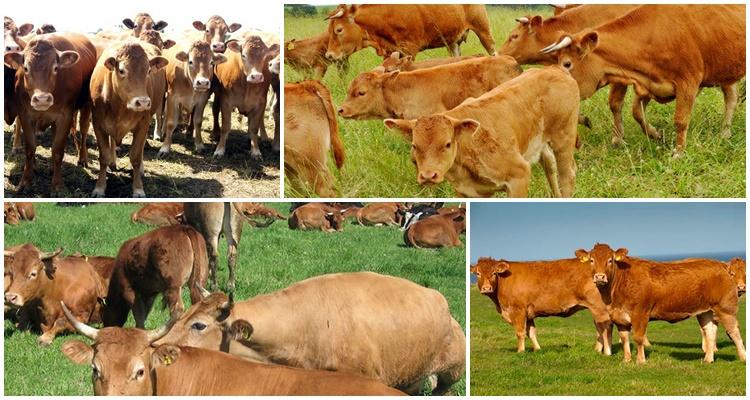
Cow grazing on a leash
Animals can be grazed on a leash in specially designated grazing areas.The tied cattle can graze both on a public, and on a personal (near the house) pasture. The main thing is not to leave the animal unattended for a long time. If the cattle gets loose and starts walking in crowded places, in private areas or near the road, you will have to pay a fine.
Electric Shepherd
Cattle can be grazed with an electric shepherd. In this case, a private pasture is fenced off with a wire, to which a low voltage electric current is supplied. Animals in such a territory graze themselves, that is, without a shepherd. When they come to the edge of a wire-fenced pasture, they are struck by a small current. The electric shepherd is not dangerous to humans, with the exception of people with heart disease.
Self-grazing cows
You can graze animals on your own, for example, on personal land plots. In the summer, cows can spend all day in a private pasture. It is recommended to drive them into the barn at lunchtime or at night. On a private plot, animals can graze on a leash or free-range, but under the supervision of the owner.
If the size of the land ownership does not allow to fully feed the cow with grass, you can agree with the local administration and graze the cattle on your own on a territory specially designated for pasture.
What are the best pastures?
It is recommended to graze pets on ecologically clean land plots that are far from the road, industrial enterprises and cities. It is advisable that the cows eat their fill. Preferred herbs are clover, alfalfa, timothy, fescue, and medicinal plants.
It is forbidden to graze livestock in meadows where there are many poisonous or soapy herbs containing saponins. It is best to graze the cows on a private, fenced-in bean-cereal type pasture, where stray dogs do not run and where other animals do not enter. The recommended grass height is 10-15 cm. Taller plants are recommended to be mowed and dried in the sun. In addition to grass, in summer, animals need to be given 150 grams of salt and 60-70 liters of water per day.
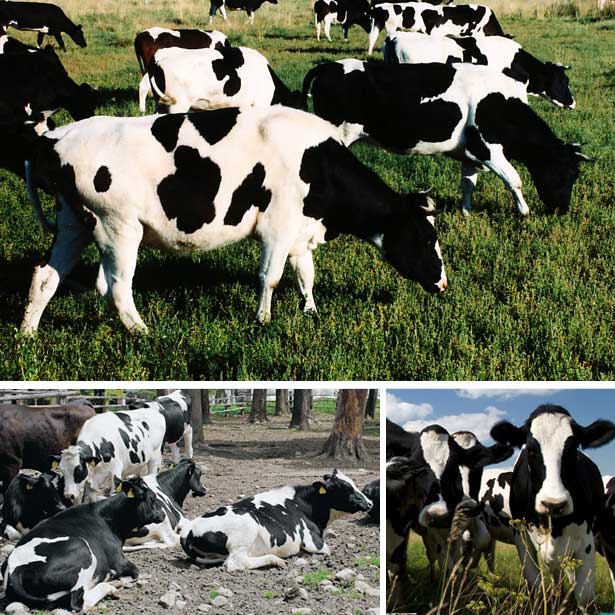
Required pasture area per cow
In summer, it is advisable to graze animals in the pasture. Grazing begins when the grass grows up to 10-12 centimeters. For the season, one cow needs a pasture of 0.3-0.5 hectares. If there are young growth, then “plus” another 0.2 hectares. One cow eats 35-65 kg of fresh grass per day.
Grazing animals should be done early in the morning, after the dew has dried. It is advisable to graze the cows in old areas first, and gradually switch to fresh grass during the day.
The pasture must be monitored throughout the summer. It is recommended to cut tall grasses in time, remove poisonous plants, sow clover or alfalfa. In early spring, meadow vegetation can be fertilized with diluted compost. In summer, events are organized on the pasture against rodents, gadflies and blood-sucking insects.
What can happen to cows in the pasture without preparation?
An animal that has been kept for winter feeding for some time should be gradually accustomed to the herd and to fresh grass. At the very beginning, it is recommended to take the cattle to the meadow only in the afternoon and only for a few hours. During this period, it is advisable to water the cows with sweetened water so that there are no problems with digestion. The first grazing is desirable on young grass up to 15 cm high. Animals reluctantly eat higher vegetation.
The worst thing that can happen to cows in a pasture is tympania, that is, bloating. The disease occurs when animals overeat wet legumes. It is advisable to ensure that there are no small fruits, foreign objects, poisonous plants in the area where the cows graze.
Rules for grazing livestock and poultry in settlements
Owners of private houses located within the boundaries of small settlements may keep cattle. True, animals need to graze on a personal plot or on a pasture specially designated by the administration. It is forbidden to leave cattle unattended. You need to graze animals yourself, or hiring a shepherd for this purpose.
If a cow grazes in a herd, then she must be escorted through the settlement to the place of collection of livestock, that is, lead on a leash. It is advisable to take a scoop and a broom with you to remove animal feces from the road. It is not allowed to drive the cows to the gathering place of the herd through schools and residential yards. If the animal walks along the side of the road, you need to be careful not to throw it under the car.
It is prohibited to graze cattle on the territory of the settlement (in parks, squares, playgrounds). If animals are in the pasture, you need to make sure that they do not run away and do not wander around the city. Cows should not be allowed to walk around the village and look for food in garbage cans. Escaped animals can trample the flower beds, wander into someone's private vegetable garden or garden. In this case, the owner of the cow will have to compensate the injured party, and also pay a fine to the state.
